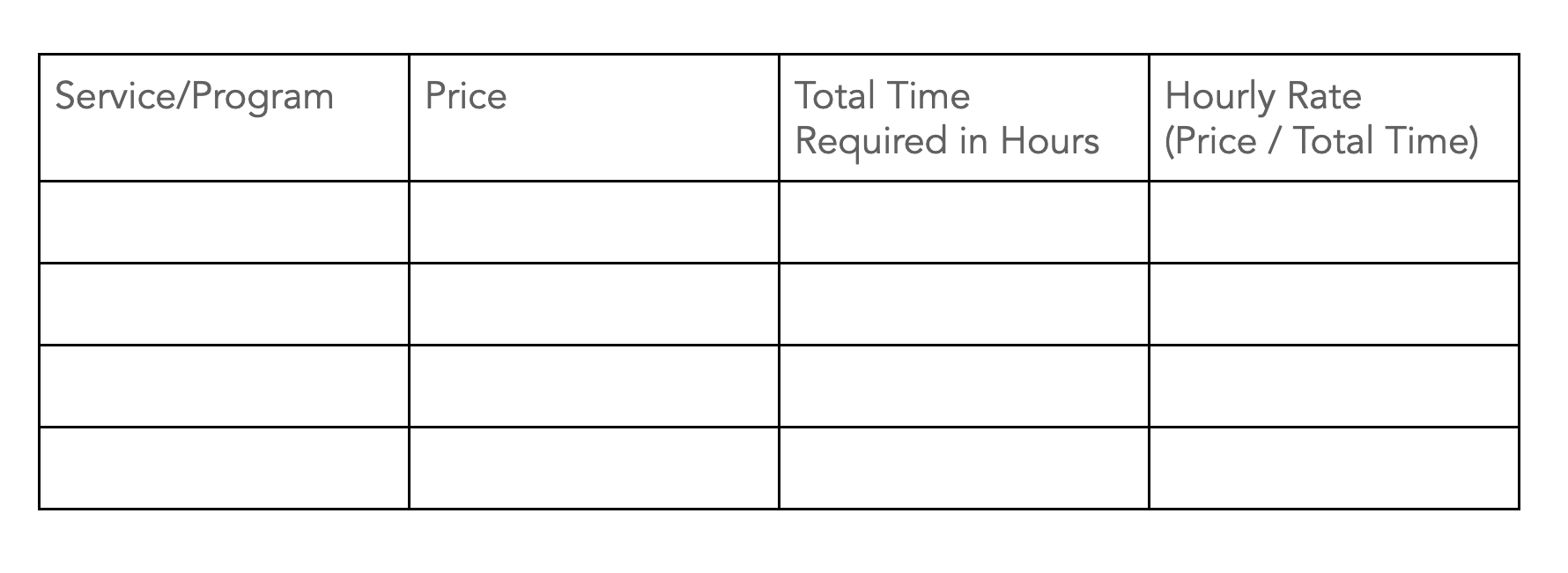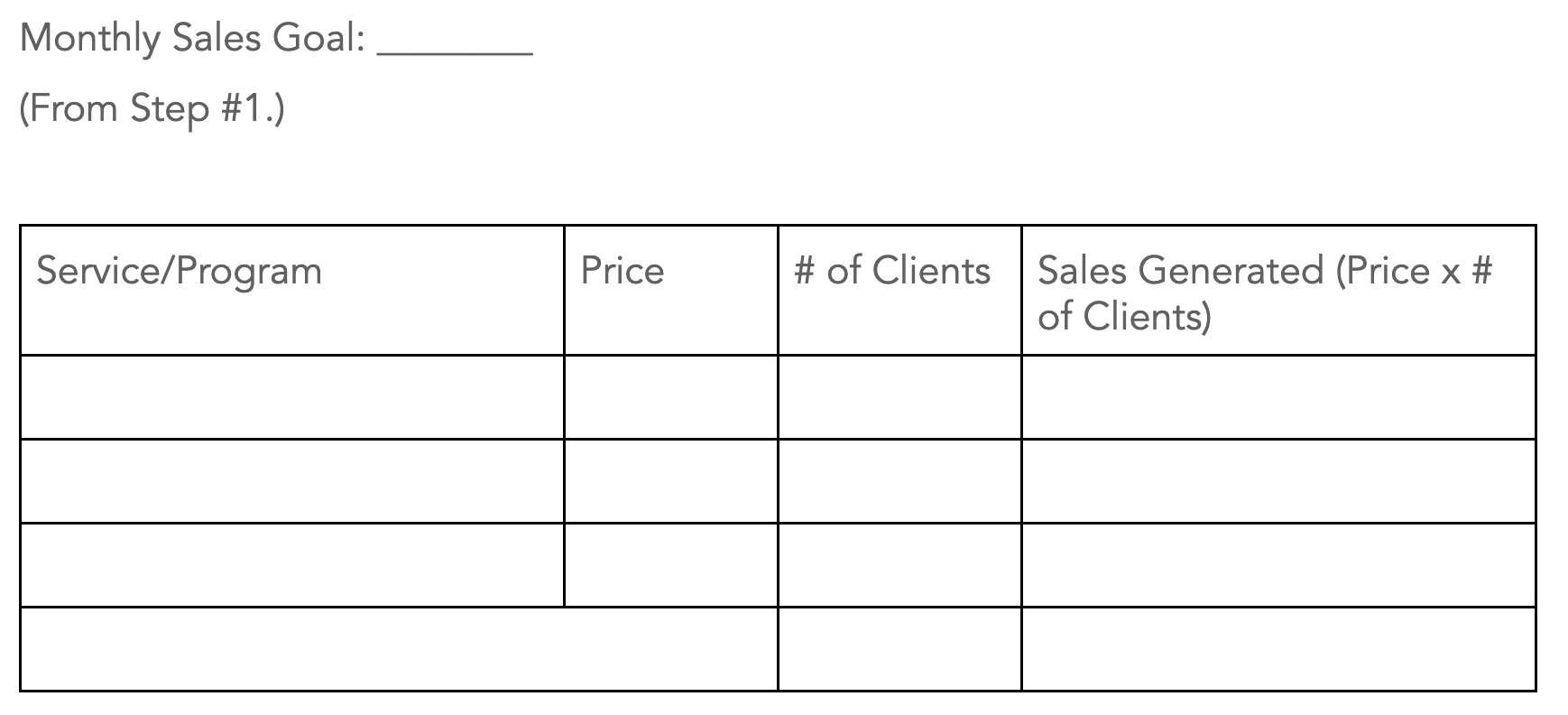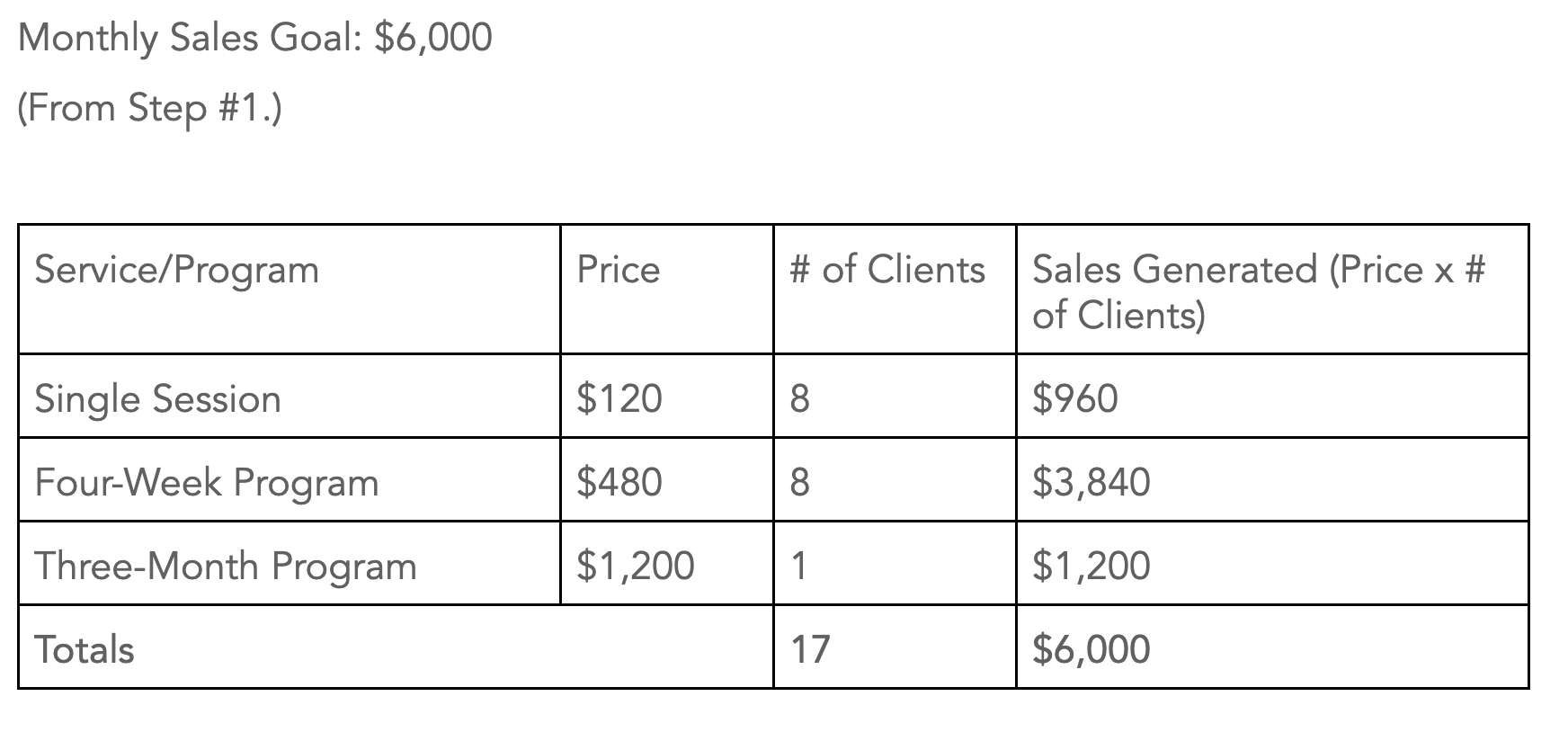We are super excited about today’s episode of Nutrition for Your Business because we are tackling one of your biggest challenges as a health professional. Yep, you guessed it. Pricing!
No word of a lie. We get asked every day, “What should I charge for my nutrition program?” or “How should I price my meal plans?”
To be completely honest, we usually avoid this question because we tend to say, “it depends”, which we know isn’t helpful, but it is true! How you price your services and programs depends on so many factors - you, your business, your clients, your personal life, your niche market, what’s included and so much more.
But then something happened that opened our eyes and made us realized we needed to tackle the pricing question head-on.
A few months ago we were helping our That Clean Life members set up their group nutrition programs and we asked them to put a price tag on their program. When we did the math, we found that many of them had set their price so low that they would actually be losing money by running the program.
Here’s an example. Amanda created a four-week group nutrition program and priced it at $59. Her goal was to enroll 20 participants, which would mean she makes $1,180 in revenue from this program. However, when we estimated the time it would take her to create, market, run and collect feedback from a four-week group program, it worked out that she was only making $14.13 an hour. Once we subtracted her business expenses, she was actually losing money on the program.
So what did we do from here? Well, we worked through it together with Amanda. We cut down on the time she would have to spend on the program and almost quadrupled the price to $200, and suddenly she was making almost $48 an hour, which was a big improvement.
But of course, the imposter syndrome started to creep in on Amanda. She wondered if she was charging too much. She was afraid no one would buy.
These fears are super common. But we truly believe it is time to rally together as an industry and start charging what we are worth. Underpricing your services and programs to the point where you are losing money is not good for you, your business or your clients.
We think Katie Haller said it best:

So, friends, this episode is dedicated to helping you price your services and programs with the confidence of organic raspberries. We’re not going to tell you what you should charge. We’re not going to give you a magical one-size-fits-all number that will solve all of your pricing problems. Instead, we’re going to walk you through the things you need to consider before putting a price tag on your services and programs, so you can make an intelligent, intentional choice that will help you create a profitable, sustainable business while also serving lots of clients like a boss.
Now let’s walk through how to price your nutrition services and programs with confidence, step-by-step. Grab the worksheet here and let's get to it!
Step 1: Calculate Your Monthly Business Expenses
First, we want you to calculate your total monthly business expenses. Take into consideration things like office rent, professional fees, advertisements, supplies, equipment, software, insurance, travel costs, meals, employees, etc, etc.
Be thorough with this step. Look back on your past bank statements to make sure you haven’t missed anything, and make estimates when necessary. Add up all of your expenses so you can determine how much your business costs to run on a monthly basis.
Step 2: Set & Assess Your Monthly Business Sales & Profit Goals
Next, it is time to both set and assess your monthly business sales and profit goals.
- Sales = the total amount of money you make by selling your programs and services.
- Profit = the amount of money you make after you have deducted your business expenses.
It is so important to consider both sales and profit when setting your goals. We live in a world that focuses on sales, but not so much on profitability. It's true. Many businesses brag about how much they have sold but fail to mention how much it cost them to make those sales.
For example, let's look at a Nutritionist who does $10,000 in sales. This sounds great, right? But what you might not know is that she actually spent $12,000 on Facebook ads, so she wasn’t profitable at all. In fact, she’s losing money. This is why we suggest that you set a goal for both sales and profit.
Let’s say your business costs $2,000 per month to run. Your goal is to do $6,000 in sales, which would mean $4,000 in profit.
Once you have your sales and profit goals set, it’s time to assess.
At the end of the day, your business profit goal is a personal decision that depends on your overall business and personal goals. You need to ensure this profit goal will allow you to pay yourself enough to cover your own personal expenses like your basic living and survival needs, at a bare minimum. But you will also want to consider your business and personal goals to ensure that this profit goal will help you reach them.
For example. Is it your goal to build your personal savings? If so, you will want to make sure your business profit goal allows you to pay yourself enough to cover your expenses and have some leftover to save. Or perhaps you’ve already been saving and your goal is to invest all profits back into growing your business for one year instead of paying yourself. If this is the case, you will want to ask yourself if your business profit goal will give you what you need to invest back into the business.
Step 3: Outline Your Services and Programs with How Much Time They Require
Now you are clear on how much your business costs to run and how much you want to make. Step three is to make a list of the current services and programs you offer.
Then beside each service, write down what you currently charge for it, or what you are thinking of charging for it. Also, write down beside each service and program how many hours of your time it costs you to deliver it.
By the end you should have the first three columns of this table filled out.

Step 4: Calculate Your Hourly Rates & Adjust Pricing if Necessary
Now it is time to fill out that fourth column of the table above.
We want you to think of this step as a checkpoint. Take a step back, look at your services, your pricing and how much time you spend on them. You can now calculate how much money you are making per hour for each of your services.
For example, let’s say you offer three core services at various price points:
- Single Session = $120: Each of these sessions takes two hours of your time, one with the client and one hour of prep and followup. So you make $60/hour with this service.
- Four-Week Program = $400: Putting a client through this program requires 8 hours of time over the four-weeks, which means you are making $50/hour.
- Three-Month Program = $800. Putting a client through this program takes about 20 hours of your time over the three-months, which means you are making $40/hour.
Download the Pricing Handbook now to optimize your pricing strategy.

Take a look at your hourly rates. Are you happy with them?
If so, move on.
If not, this is where you need to reevaluate your pricing. Adjust the prices of your programs and services until you have an hourly rate you feel happy with.
For example, let’s say your goal is to make $60/hour to start. You would need to increase the price of your four-week program from $400 to $480, and the price of your three-month program from $800 to $1,200. This way you will be making a consistent hourly rate of $60/hour.

After going through this exercise, many health professionals realize they are undercharging and increase their prices. We’ve seen cases where nutritionists realize they are charging less than minimum wage for their time once they work out how the price of their services and how much time they are spending on it. Obviously, that isn't sustainable, which is why it is so important to go through this exercise.
Step 5: Determine How Many Clients You Need to Reach Your Monthly Sales Goal & Adjust Pricing if Necessary
Step five is your second checkpoint. Now that you’ve calculated your hourly rate, it is time to determine how many clients you need to reach your monthly sales goal.

Going back to our example, let’s say your sales goal is $6,000 and now your three core services are priced at $120, $480 and $1200. Figure out how many clients per month you would need under each service in order to reach your monthly sales goal of $6,000. There are many ways you could reach this goal. For example, you could book 8 clients for single sessions, 8 clients into your six-week program and one client into your three-month program. That would mean you need 17 new clients to hit your goal of $6,000 in sales (or $4,000 in profit once you subtract your business expenses).

This second checkpoint really helps you visualize how viable your prices are. You should be able to clearly see how many clients you will need to hit your sales goal and you need to ask yourself if attracting and serving this number of clients is realistic for you with where you are currently at in your business. If not, you may need to adjust your prices again in order to reach your goals.
By now, you have your final pricing, which has been intentionally set based on your needs and goals. You know exactly how many clients you need to secure to reach those goals, so you can start making a plan on how you are going to attract them.
When you take the time to work out the numbers, you can present your pricing with confidence, knowing you are charging exactly what you are worth, and exactly what you need to thrive both personally and as a business.
Should I offer discounts? You’ve invested a lot of time in pricing your services and programs strategically to cover your costs and be profitable, and discounts will only throw that off. Not to mention, they can cheapen your time, expertise and value. You do not need to discount your work in order to make sales.
These prices will be your starting point and should be adjusted over time. The more clients you work with, the more experience you will gain. That experience will allow you to be better at your work. Be ready to increase your rates to match the value you are offering your clients over time.
Remember: when it comes to pricing and asking for what you are worth, you need to have the confidence of organic raspberries!

